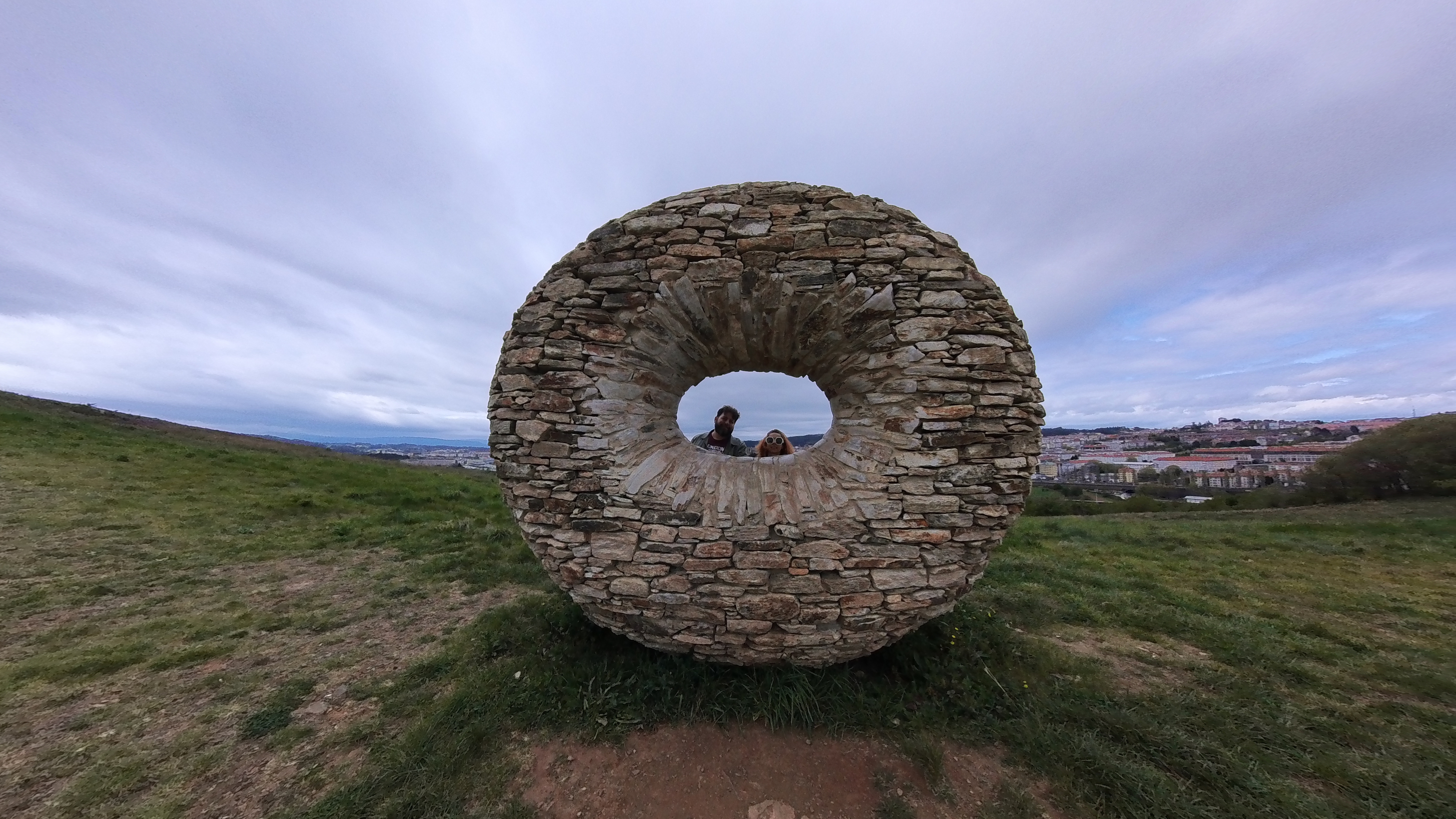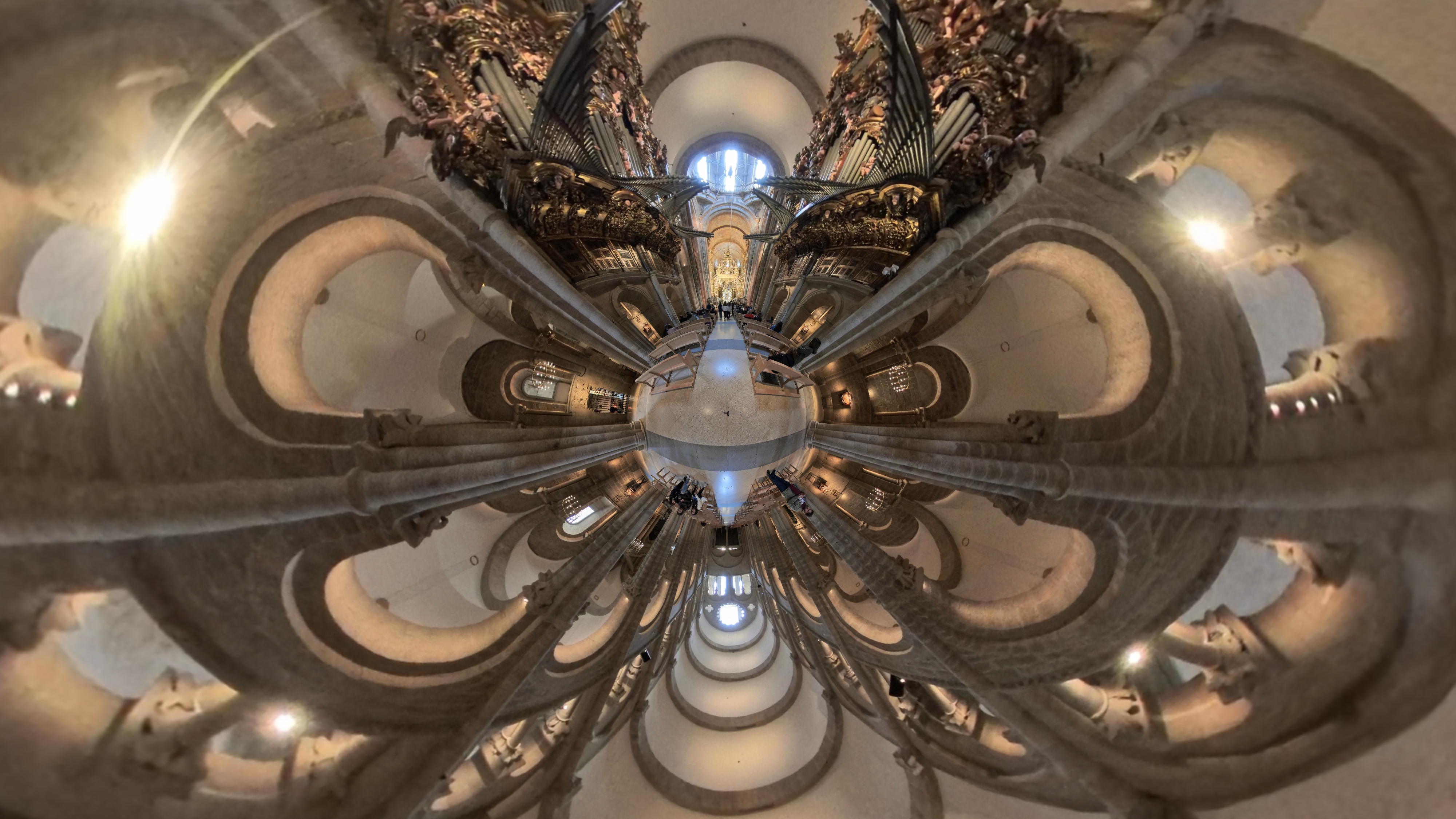I thought a 360 camera would ruin a family vacation – but I took it anyway
The Insta360 X3 is a 360° action camera – it enables you to capture everything, but is that too much on vacation?

Packing for a long weekend with the family on a budget airline, there was no room for a grown-up camera. Not even my trusty A7iii. But I wanted to try something other than the iPhone which is almost surgically attached to me, so why could I do? I'd been itching to try a 360-degree camera for an extended spell, and this seemed the perfect moment.
The device in question is my latest personal splash – the Insta360 X3 – which I acquired in part because I'm always trying to get new gadgets to lure me onto the bike and this has an awesome Third-Person Bike Handlebar Mount. Anyway, that's a discussion for another day; I certainly wasn't getting the bike in the luggage bin!
Tucking in the X3, however, was no issue. The camera isn't like a thinner, longer action camera and the lens cover (which, admittedly, does require care) stayed attached. The other essential was the "Invisible selfie stick," so called because the mount is below the back-to-back fisheye lenses and so easily processed out by the otherwise spherical view the camera captures at 5.7K.

Portability wasn't really my concern. This all slipped into a pocket of my long-suffering back-pack. I already included a power adapter with a USB-C charging cable for my assorted devices.
What did bother me was whether the exposed lenses were really safe in the real world, whether my family would hate me for waving a selfie stick around like a tourist (even though, well, we were tourists), and how easily editing could take over the joys of European coffee shops or family time in the AirBnB.

Were ruggedness and exposed lenses a factor?
Well, yes and no. You always have to look after a camera when you're going somewhere sandy, and it's always a faff so, on the one day we took the train to Vigo and tracked down a beach, I started to get a bit anxious.
It wasn't that I was planning on going in the water – that wasn't really an issue, since the camera is waterproof – I was more concerned about scratching the glass. As it happened we didn't have long, and my son was more interested in the rock pools (and quicksand) near the sharp rocks, so I hopped simply followed with a low birds eye view.
The best camera deals, reviews, product advice, and unmissable photography news, direct to your inbox!
I suspect I was more worried than I needed to be, but at the time the device was very new.

Using a selfie stick
I've always been a bit of a selfie-stick skeptic, at least out loud. I'm a grown man with very little viewer appeal, I regularly remind myself, and I don't regularly post walk-and-talk videos, but to be honest, I've always liked well-designed devices like the DJI OM6.
Here, though, the point of the stick is more than just a better angle on yourself – it offers a different perspective on whatever kind of shot you're looking to get. You have a wide-angle camera which can see in any direction which the pole just lets you navigate into the right place. It's a lot more like my true love – drone operation – without buzzing and terrifying people with whirring blades.
If you've never tried it, the creative potential isn't immediately apparent. I found that the more I tried it, the more ideas I had, and the more I wanted to try again.
We were staying in Santiago de Compostela in northwest Spain, destination of many pilgrimages, and we walked onto Easter processions in progress. This felt a real chance to get involved in a wholly different way to standing to the side with a big lens. Instead, I had something discrete and touristy, but could perhaps sneak in close a few times.
At one point I even suffered selfie stick envy. I spotted another X3 on the tip of the 3m (10ft) Extended Edition pole being wafted over participants of a religious ceremony and sullenly realized they were getting better footage. To my surprise, even this ridiculous rod didn't seem to garner much attention from the presumed subjects, either. Selfie sticks are normal now, it seems, and my family didn't mind either.
The app and editing
No question, this is addictive and it takes time. I did find, however, it was possible to manage use of the app to do some things fast, and leave other things to longer periods of alone time. The app can even be a bit distracting when shooting as it offers a bigger screen and easy access to features via wireless connection (which is why my phone appears in a lot of photos and unedited videos!)
The app does churn through even the generous battery of the iPhone 14 Pro Max, but that was all I had with me to make my initial experiments. It is also very powerful in terms of fine detail if you want, with keyframe and all kinds of tweaking as well as the preset effects you've seen on social.
Insta360 Studio is also available for Mac and PC, and this is a great way to come back to the photos and videos later to make more refined changes or just examine them in more detail. A lot of the originals taken in anything but bright sunlight look a bit gloomy but the 143MB is processed through the 'PureShot' feature to create very creditable images.

The fact I stopped to find a few photos for this article says two things. Firstly that I didn't produce many at the time (or at least they didn't go where the usually do, as you have to actively transfer them to the normal phone gallery). Secondly that the Insta360 Studio app is dangerously addictive – clicking and dragging, pulling in and out in attempt to find the 'just right' angle from a 72 megapixel spherical still.
5.7K worth of video is, in truth, rather less to play with and there were shots I wouldn't have bothered trying on reflection – or I'd have pushed to be closer. Live and learn.



So, did it ruin the trip?
No, not for the reasons suggested, at least. The few quickly shared (via Apple Photos) images were enjoyed by all, but when I asked my partner if the 360-degree camera (or the app) had been a problem she said "No, it was great – it was nice to be able to take family photos without having to give the phone to strangers and at one point even though you'd gone away a bit we knew where you were because we could see the stick!"
What about over-using the app? "I don't remember you doing that – what I did notice was how we didn't see many of the pictures. When you take a picture with a camera or a phone everyone can look at the screen there, but that didn't really happen with that camera."
She's right; the 2.29-inch touchscreen isn't very big and much of the tweaking is quite an involved process on the app. There is even a photo-turned video (an app effect) that shows me using the phone as a viewfinder for what was meant to be a family shot from the AirBnB windows!
As for the camera sticking out, there were a couple of times I felt I could capture a timelapse of a busy street so attempted to maintain my speed – you might say I was letting photographic goals interfere with family time, but clearly it was within acceptable limits.
Should you go for it?
If you're looking for something new and different, I feel like we've hit a resounding yes. If you like your photo and video experience to be a continuum – across camera, sharing platform, and computer – then yes. There is just so much more to experience, and – it seems – it can be done without spoiling things for others (they'll even want to see more)!
Check our list of best 360-degree cameras to see if the Insta 360 X3 which I chose is the right one for you, and don't skimp on the accessories.

With over 20 years of expertise as a tech journalist, Adam brings a wealth of knowledge across a vast number of product categories, including timelapse cameras, home security cameras, NVR cameras, photography books, webcams, 3D printers and 3D scanners, borescopes, radar detectors… and, above all, drones.
Adam is our resident expert on all aspects of camera drones and drone photography, from buying guides on the best choices for aerial photographers of all ability levels to the latest rules and regulations on piloting drones.
He is the author of a number of books including The Complete Guide to Drones, The Smart Smart Home Handbook, 101 Tips for DSLR Video and The Drone Pilot's Handbook.
